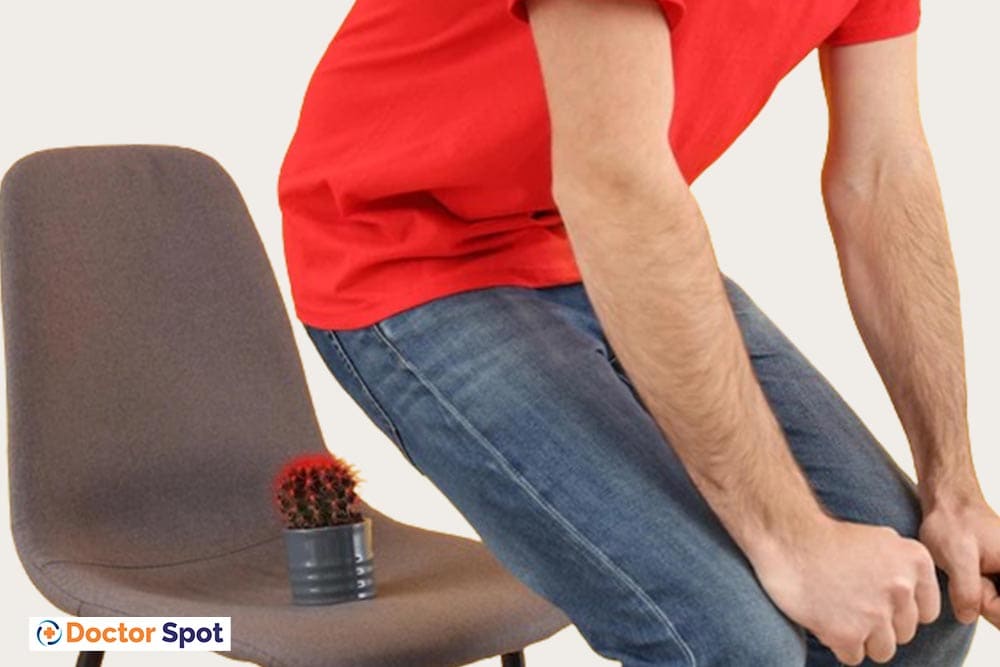What are Hemorrhoids, and How Do They Develop?

Table of Contents
Introduction to Hemorrhoids
Have you ever experienced that uncomfortable feeling down there? You know, the one that makes sitting a real pain in the… well, you get the idea. If so, you might be dealing with hemorrhoids. But what exactly are these pesky little troublemakers, and how do they come to crash our party?
Hemorrhoids, often referred to as piles, are swollen veins in the lower part of your rectum and anus. Think of them as varicose veins, but in a much more sensitive area. They can be a real nuisance, causing discomfort, pain, and even bleeding. But don’t worry, you’re not alone in this struggle. In fact, about 1 in 20 Americans, and half of adults over 50, have dealt with hemorrhoids at some point in their lives.
Types of Hemorrhoids
Internal Hemorrhoids
These sneaky little guys form inside the rectum. You usually can’t see or feel them, and they rarely cause discomfort. But don’t let that fool you – they can still cause problems, especially when they decide to bleed.
External Hemorrhoids
Now, these are the troublemakers you can actually see and feel. They develop under the skin around your anus and can cause quite a bit of discomfort. When a blood clot forms inside an external hemorrhoid, oh boy, that’s when things can get really painful!
Causes of Hemorrhoids
So, how do these unwelcome guests develop in the first place? Let’s break it down.
Increased Pressure in the Lower Rectum
This is the big one. When there’s too much pressure down there, your veins can get swollen and inflamed. It’s like trying to squeeze too much toothpaste out of the tube – something’s gotta give!
Straining During Bowel Movements
Ever find yourself pushing a little too hard on the porcelain throne? That extra effort can put a lot of pressure on those delicate veins, leading to hemorrhoids.
Pregnancy and Childbirth
Ladies, I hate to break it to you, but growing a human inside you can really put the squeeze on your nether regions. And don’t even get me started on childbirth!
Chronic Constipation or Diarrhea
Both of these conditions can lead to straining, which, as we’ve learned, is not your rear end’s best friend.
Aging
As we get older, the tissues supporting the veins in our rectum and anus can weaken and stretch. It’s like gravity is working against us in the most inconvenient places!
Risk Factors for Developing Hemorrhoids
Sedentary Lifestyle
Sitting on your bum all day might seem like a cushy job, but it can actually increase your risk of hemorrhoids. Who knew being a couch potato could be so dangerous?
Obesity
Carrying around extra weight puts additional pressure on your veins. It’s like your bottom is constantly carrying a heavy backpack!
Low-Fiber Diet
Not getting enough fiber in your diet can lead to constipation, which, as we know, is a hemorrhoid’s best friend.
Heavy Lifting
Pumping iron might be great for your biceps, but it can put a real strain on your bottom line.
Symptoms of Hemorrhoids
How do you know if you’ve got a case of the ‘rhoids? Here are some telltale signs:
Pain and Discomfort
This can range from a mild annoyance to a “can’t-sit-down” level of discomfort.
Bleeding
If you see bright red blood on your toilet paper or in the bowl, don’t panic, but do talk to your doctor.
Itching and Irritation
It’s like having a mosquito bite in the most inconvenient place possible.
Diagnosis of Hemorrhoids
If you suspect you have hemorrhoids, it’s best to get checked out by a doctor. They’ll likely perform a visual examination and may use a scope to get a better look inside. It’s not the most glamorous process, but it’s important for proper diagnosis and treatment.
Treatment Options
The good news is, there are plenty of ways to tackle hemorrhoids!
Home Remedies
These can include sitz baths, over-the-counter creams, and increasing your fiber intake. It’s like giving your bottom a spa day!
Medical Treatments
For more stubborn cases, your doctor might recommend procedures like rubber band ligation or sclerotherapy. They sound scary, but they’re actually quite effective.
Surgical Interventions
In severe cases, surgery might be necessary. But don’t worry, it’s usually a last resort.
Prevention Strategies
An ounce of prevention is worth a pound of cure, especially when it comes to hemorrhoids. Here are some tips:
- Eat plenty of fiber
- Stay hydrated
- Exercise regularly
- Don’t strain on the toilet
- Go when you need to go (don’t hold it in!)
Conclusion
Hemorrhoids might be a pain in the you-know-what, but they’re a common and treatable condition. By understanding what they are and how they develop, you can take steps to prevent them or seek treatment if they do occur. Remember, your bottom deserves the best care possible!
FAQs
Can hemorrhoids go away on their own?
Yes, small hemorrhoids can often resolve on their own with proper self-care and lifestyle changes.
Are hemorrhoids dangerous?
While uncomfortable, hemorrhoids are generally not dangerous. However, they can lead to complications if left untreated.
Can I pop a hemorrhoid?
No, you should never try to pop a hemorrhoid. This can lead to infection and make the problem worse.
Is bleeding always a sign of hemorrhoids?
While bleeding can be a symptom of hemorrhoids, it can also indicate other more serious conditions. Always consult a doctor if you experience rectal bleeding.
Can children get hemorrhoids?
While less common, children can develop hemorrhoids, especially if they struggle with constipation.